Похожие презентации:
General concepts of pathophysiology
1.
Kazan State Medical UniversityGeneral Pathology Department
GENERAL CONCEPTS OF
PATHOPHYSIOLOGY
2.
The term pathophysiology may be defined asthe physiology of altered health or disordered function
It combines the words pathology and physiology
• Pathology (from the Greek «pathos» - disease)
deals with the study of the
structural and functional changes in
-cells,
-tissues,
-organs,
that cause or are caused by disease
• Physiology deals with the functions of the human body
3.
Pathophysiology deals withthe cellular and organ dysfunction that occurs with disease
the effects that these changes have on total body function
the mechanisms of the underlying disease
Pathophysiology serves as a bridge
between the basic sciences and the clinic
Provides the background
for preventive a therapeutic
health care measures and practices
4.
HEALTHThe World Health Organization (WHO) in 1948 defined health
as a:
“state of complete physical, mental, and social well-being and not
merely the absence of disease and infirmity”
Healthy person adapts successfully to the stresses
and injurious factors,
he is in balance with the environment
5.
•When adapting to stresses the body uses those behaviors thatare the most efficient and effective
• It does not use long-term mechanisms when
short-term adaptation is sufficient
6.
e.g.The increase in heart rate in physical activity is a temporary
response
designed to deliver additional oxygen to tissues
during the short period that the physical activity increases
metabolic needs
Hypertrophy of the muscle
is a long-term adaptive response
that occurs in sportsmen
7.
Adaptation is affected by• the availability of adaptive responses
(the greater number of available responses, the more effective the
capacity to adapt)
•the ability of the body to select the most appropriate response
аdaptive capacity is decreased with extremes of age
the immaturity of the infant
the decline in functional reserve that occurs in the elderly
with disease conditions that limit the availability of adaptive
responses
8.
e. g.•Infants have difficulty concentrating urine
because of the immaturity of renal tubular structures and
therefore are less able to cope with
decreased water intake or water losses
•Persons with preexisting heart disease
are less able to adapt to health problems
that require recruitment of cardiovascular responses
9.
Adaptation is less effective when changes in health status occursuddenly rather than gradually
• it is possible to lose a liter of blood through chronic
gastrointestinal bleeding without developing signs of shock
• a sudden hemorrhage causing the loss of the same amount of
blood produces hypotension and circulatory shock
10.
• In the early 1930s,• The world-renowned endocrinologist Hans Selye
• Was the first to describe a group of
•specific anatomic and functional changes that developed in
response to many different (nonspecific) experimental challenges
in rats he was using for his studies
It was a triad of :
•adrenal enlargement
•thymic atrophy
•gastric ulcer
11.
•These changes were manifestations of the body's attempt toadapt to stimuli
Selye described stress as:
“…a state manifested by
a specific syndrome of the body
developed in response to
any stimuli that made
an intense systemic
demand on it."
•He assumed that the hypothalamic-pituitary-adrenal (HPA) axis
played a pivotal role in the development of this response
12.
Selye labeled the responsethe General Adaptation Syndrome (GAS):
•general because the effect was a general systemic reaction of
the body
•adaptive because the response was in reaction to a stressor
•syndrome because the physical manifestations were coordinated
and dependent on each other
13.
According to Selye, the GAS involves three stages:•the alarm stage
•the resistance stage
•the exhaustion stage
14.
The alarm stageshort term stimulation of the sympathetic nervous system and
the HPA axis, resulting in the release of catecholamines and
cortisol
The resistance stage
long term adaptation uses up energy reserves (cortisol level
maintained)
If the stressor is prolonged or overwhelms the ability of the body
to defend itself, the exhaustion stage ensues,
resources are depleted and signs of "wear and tear" or systemic
tissue damage appear
15.
Selye proposed the terms:Eustress and Distress
Eustress
mild, brief, and controllable periods of stress
are positive stimuli to physical, emotional and intellectual growth
and development
Distress
the severe, protracted, and uncontrolled
activity of stress system
leading to psychological and physical
disruption of health
16.
Locus Ceruleus (LC)Central to the neural component of the neuroendocrine
response
•An area of the brain stem
•Is populated with
neurons that produce
norepinephrine (NE)
•Is the central integrating site for the ANS response to stressful
stimuli
•The LC-NE system has afferent pathways to the hypothalamus,
the limbic system, and the cerebral cortex
17.
Corticotropin-releasing Factor (CRF)Сentral to the endocrine component of the neuroendocrine
response to stress
•Is a small peptide hormone found in the hypothalamus
also in extrahypothalamic structures - the limbic system and the
brain stem)
•Is both an important endocrine regulator of pituitary and adrenal
activity and a neurotransmitter involved in ANS activity,
metabolism, and behavior
•Receptors for CRF are distributed throughout the brain as well as
many peripheral sites
18.
Catecholamines (norepinephrine, epinefrine)The most rapid of the stress responses
Locus ceruleus, adrenal medulla
Produce:
•a decrease in insulin release
•an increase in glucagon release
resulting in:
increased glycogenolysis, glyconeogenesis,
lipolysis, proteolysis
decreased glucose uptake by the
peripheral tissues
Effects can be summarized as substrate (glucose) mobilization
19.
an increase in heart rate, cardiac contractionrelaxation of bronchial smooth muscle
increased sympathetic activity in the brain increases attention
and arousal and thus intensifies memory
The SNS manifestation of the stress
has been called the
«Fight or flight response»
20.
Glucocorticoid hormones (cortisol)Adrenal cortex
•potentiates the actions of epinephrine and glucagon;
•inhibits the release and/or actions of the reproductive hormones
and thyroid- stimulating hormone;
•produces a decrease in immune cells and in inflammatory
mediators
•maintains blood glucose levels by antagonizing the effects of
insulin
•suppresses osteoblast activity, hematopoiesis, protein and
collagen synthesis
All functions are meant to focus energy on regaining balance in
the face of an acute challenge to homeostasis
21.
DISEASEany deviation from or interruption of
the normal structure and function of
a part, organ, or system of the body
that is manifested by
a characteristic set of symptoms, signs and syndromes
A disease limits the ability of the body to adapt to stresses and
injurious factors
22.
ETIOLOGYEtiology is a science that studies causes of diseases
The causes of disease are known as
etiologic factors or pathogenic factors
Etiologic factor determines specific signs of the disease
Two major classes of etiologic factors
• Extrinsic or acquired
• Intrinsic (genetic…)
23.
Acquired events occur after birth• biologic agents (e.g., bacteria, viruses, parazites…)
• physical forces (e.g., trauma, burns, radiation…)
• chemical agents (e.g., poisons, alcohol, drugs…)
24.
The features of pathogenic factors are:extraordinarity (very high or very low temperature, poisons…)
excesses (lipids…) or deficits (vitamins, oxygen…)
periodical or long term exposure (chronic stress, exposure to
allergens, inhalation of coal or other dust…)
25.
Heredity as an etiologic factorCongenital defects present at birth, may be caused by
• genetic influences
• environmental factors (e.g., viral infections in the mother,
maternal drug use, irradiation…)
• a combination of genetic and environmental factors
26.
Many diseases are the result of botha genetic predisposition
an environmental event or events that serve as a trigger to
initiate disease development
The multiple factors that trigger a particular disease are referred
to as risk factors
The true etiology of those diseases remains largely uncertain
27.
E.g. polymorphisms and mutations in genesare linked to the development of essential hypertension
•angiotensin gene,
•angiotensin converting enzyme gene,
•angiotensinase C gene,
•β2 adrenergic receptor gene,
•renin binding proteins gene,
•atrial natriuretic factor gene,
•insulin receptor gene…
28.
PATHOGENESISThe sequence of cellular and tissue events
that take place from the time of initial contact with an etiologic
agent until the ultimate expression of a disease
The sequential development of
signs and symptoms that accompany
the disease
Etiology describes what sets the disease process in motion,
Pathogenesis - how the disease process develops
29.
Pathogenesis includes:• pathologic process – a natural progression of changes, caused
by etiologic factors, accompanied by adaptive reactions
Pathologic process is a more general category than disease
One and the same pathologic process may contribute to the
pathogenesis of various diseases
Some of pathologic processes contributing to the pathogenesis of
many diseases are called «typical»
30.
VICIOUS CIRCLE IN THE PATHOGENESISVicious circle: a complex of events that reinforces itself through a
feedback loop toward greater instability
Positive feedback – "cumulative causation",
a feedback loop system in which the system responds to
pertubation in the same direction as the perturbation
"A produces more of B which in turn produces more of A“
31.
VICIOUS CIRCLE IN THE PATHOGENESISDecreased cardiac output (CO) by failing heart =>
decreased coronary blood flow =>
decreased heart muscle blood supply =>
decreased heart performance =>
decreased CO
32.
Diseases are classified according to:•etiologic factor (infectious, congenital, traumatic…)
•pathogenesis (inflammatory, allergic, neoplasia…)
•affected organ or organ system (pulmonary diseases,
cardiovascular diseases, renal diseases…)
•sex (disorders of the male or female reproductive tract)
•age
33.
Signs and symptoms are used to describe the structuraland functional changes that accompany a disease
•A symptom is a subjective complaint
that is noted by the person with a disorder
•A sign is a manifestation that is noted by an observer
•A syndrome is a compilation of signs and symptoms that are
characteristic of a specific disease state
(e.g., jaundice, acute or chronic renal failure…)
34.
• signs and symptoms may be related to the primary disorder(ketoacidosis in uncontrolled diabetes mellitus)
• may represent the body’s attempt to compensate for the altered
function caused by the pathologic condition
(a compensatory increase in respiratory rate in a case of a
decrease in pO2 )
Signs and symptoms can be general or local, specific or
nonspecific
35.
General – involving the whole body:fever, weight loss, leukocytosis…
Local – involving affected tissue:
edema, redness…
Nonspecific – present in many diseases:
headache, fever…
Specific – present in a particular disease:
factor VIII deficiency in hemophilia A,
blast cells present in the blood count in acute leukemia…
36.
Clinical CourseThe clinical course describes the evolution of a disease
Duration of a disease can be
•acute (minutes, days…)
•subacute (weeks, months…)
•chronic (months, years…)
An acute disorder is one that is relatively severe, but self-limiting
Subacute disease is intermediate or between acute and chronic: it
is not as severe as an acute disease and not as prolonged as a
chronic disease
37.
Chronic disease implies a long-term processA chronic disease can run a continuous course,
or it can present with:
exacerbations (aggravation of symptoms and severity of the
disease)
remissions (a period during which there is a lessening of
severity and a decrease in symptoms)
38.
Stages of disease:the latent stage, when the disease is not clinically evident,
(incubation period – e.g. shot-incubation hepatitis A - 4-8 weeks,
long-incubation hepatitis B - 8-20 weeks)
the prodromal stage, when general, nonspecific symptoms are
present
the peak stage is manifested by specific signs and symptoms
the outcome
39.
The outcome of the disease can be:•complete recover
•incomplete recover (sequelae are lesions or impairments that
follow or are caused by a disease - operated stomach, scars,
extracted teeth…)
•complications (possible adverse extensions of a disease
or outcomes from treatment)
•chronic course
•death

















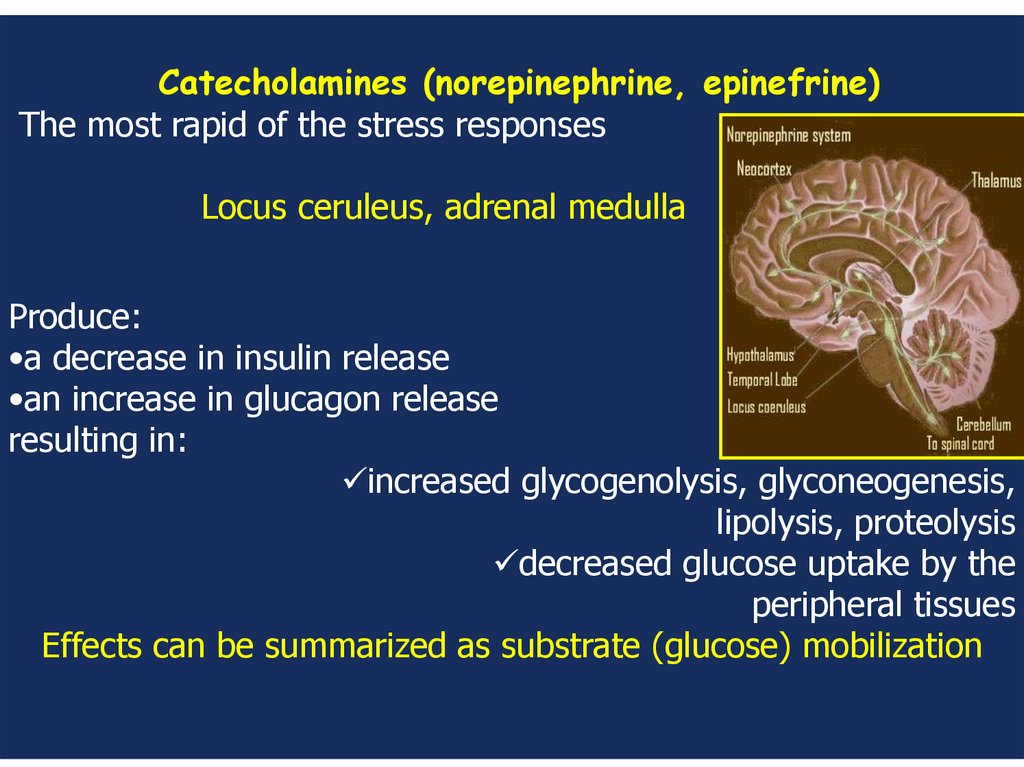



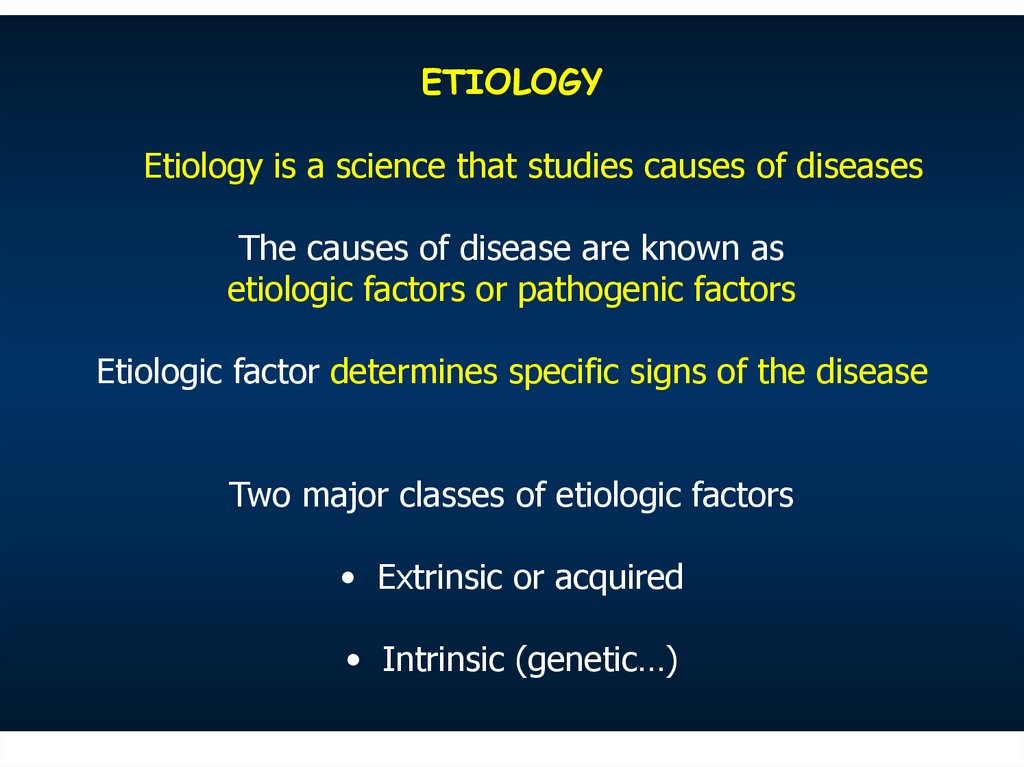
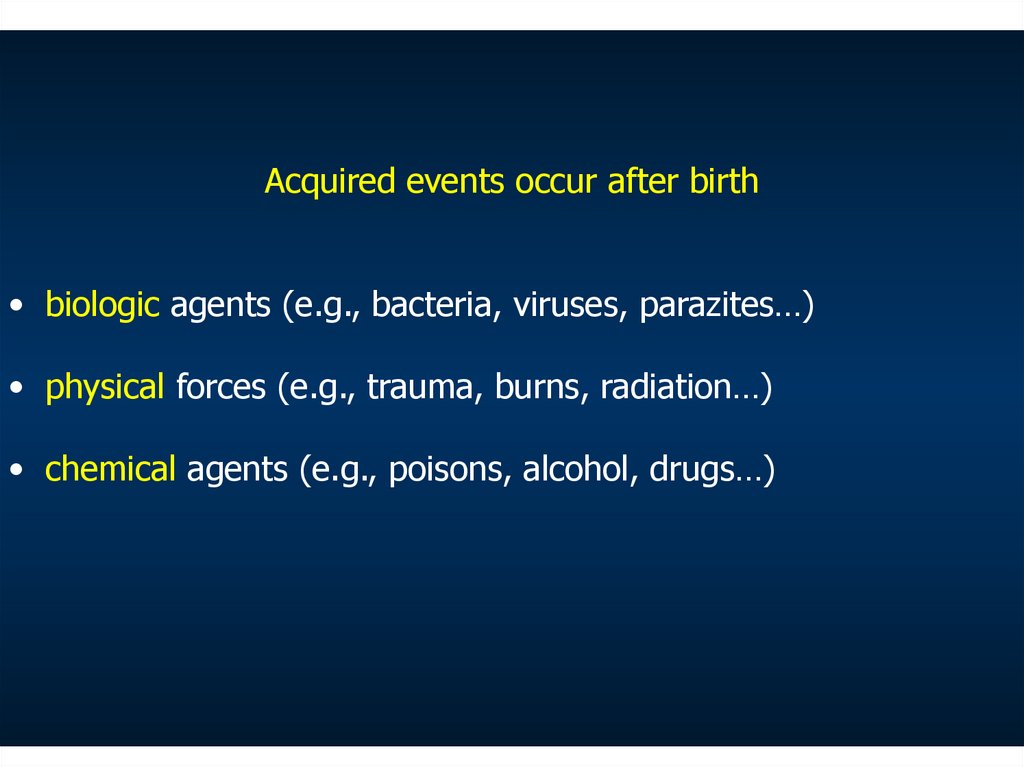
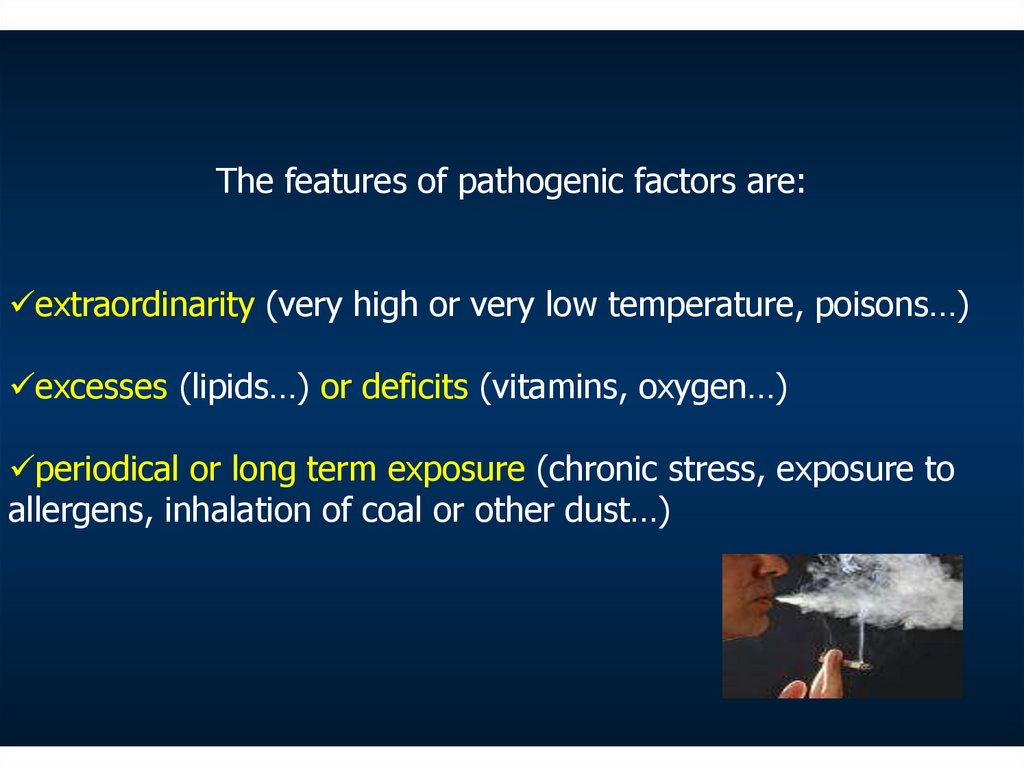

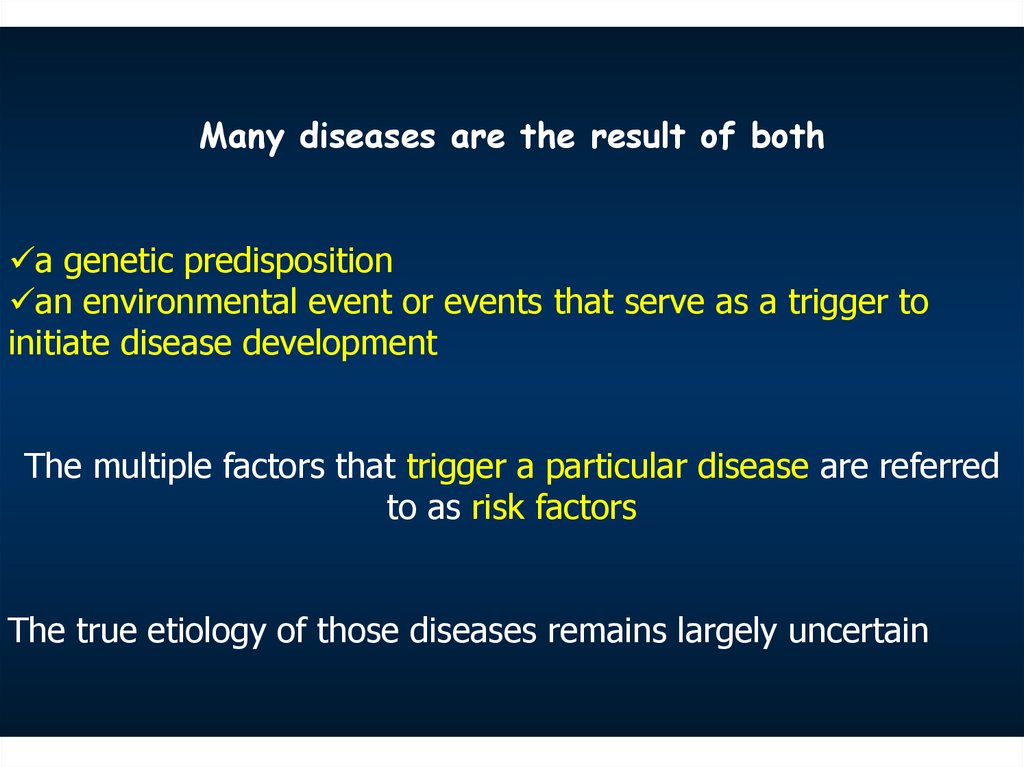
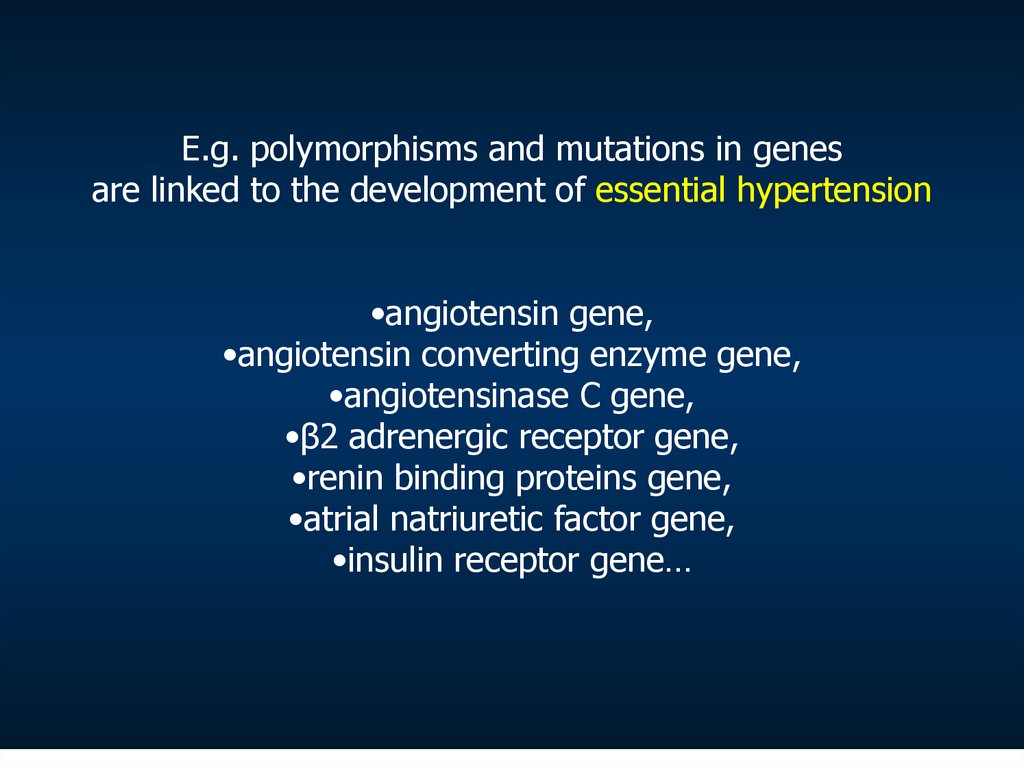

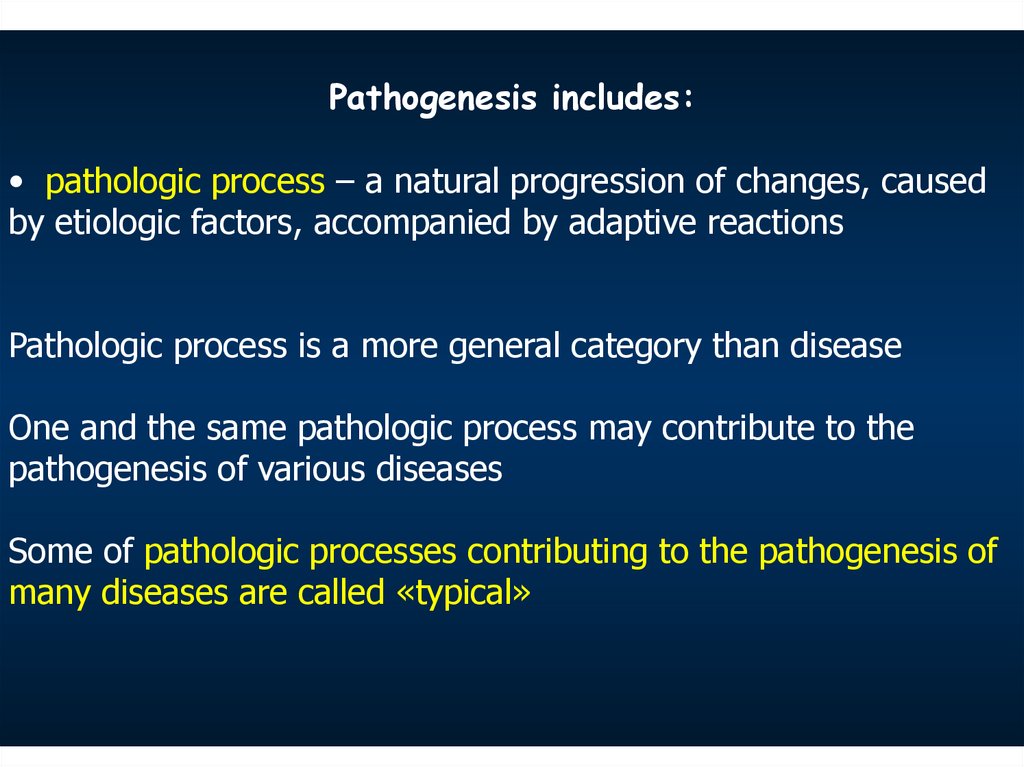

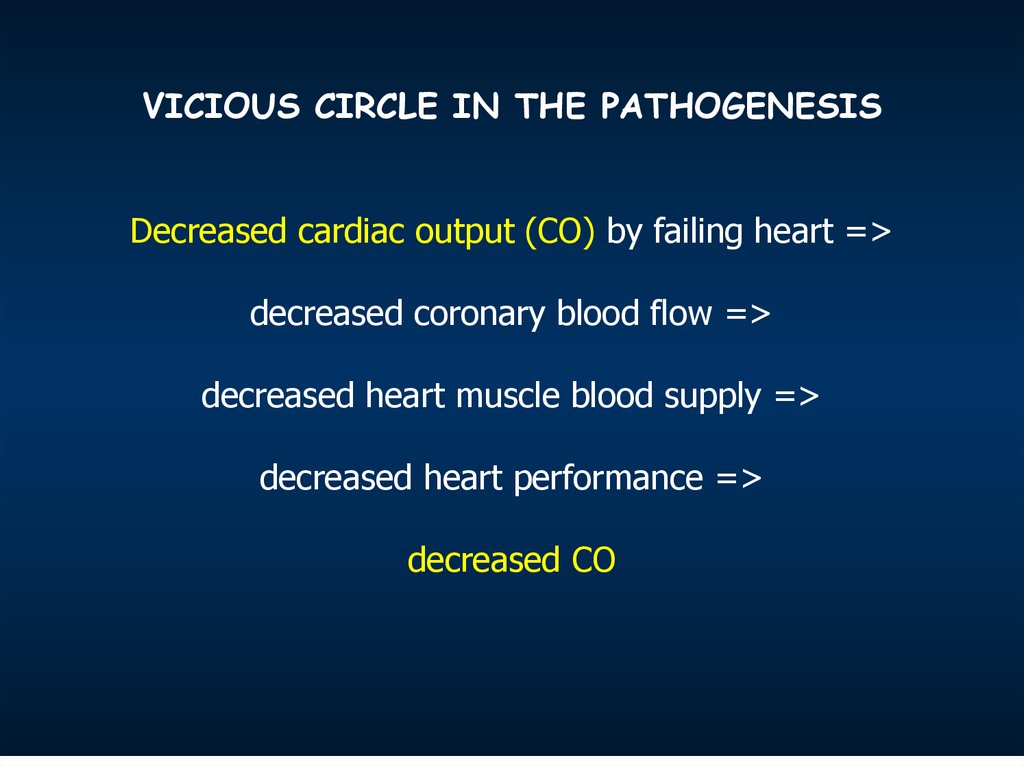

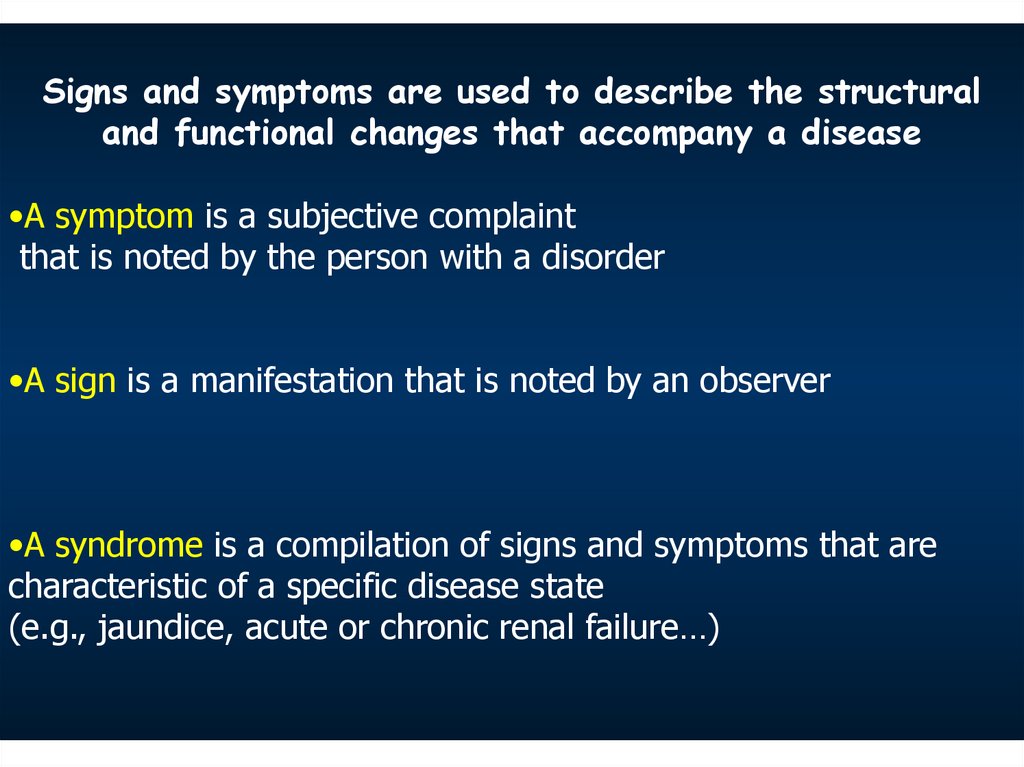




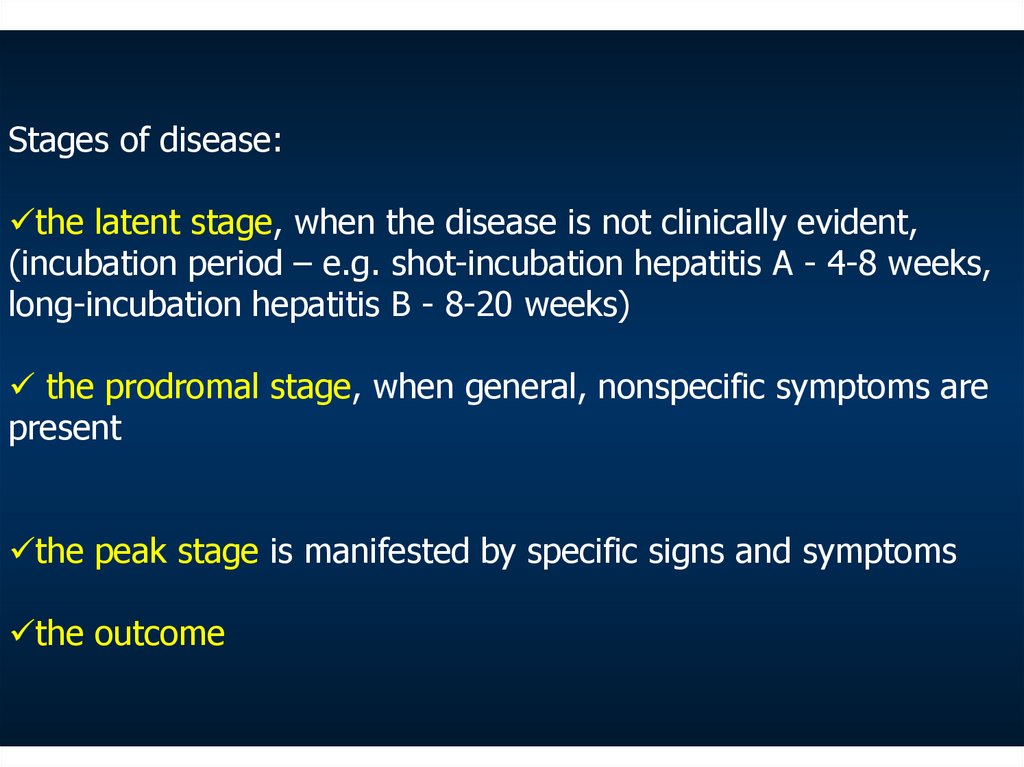


 Медицина
Медицина








